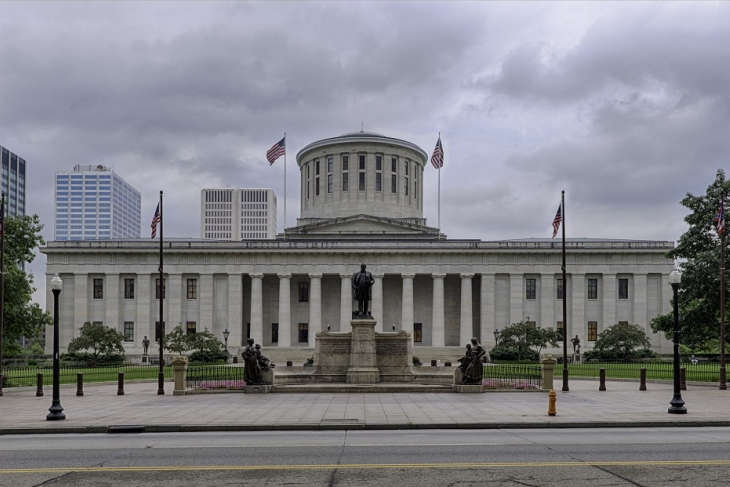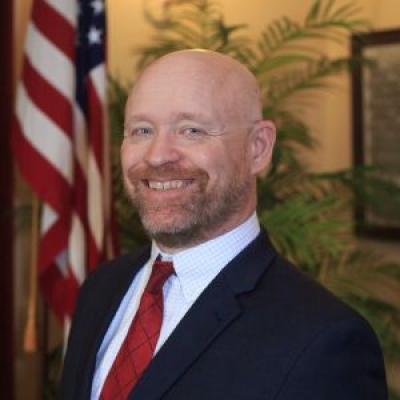NOTE: The Finance Subcommittee on Primary and Secondary Education of the Ohio House of Representatives today heard testimony on HB 166, the state’s biennial budget bill. Fordham’s Chad Aldis was a witness at this hearing and here are his written remarks regarding aspects of the budget and on the portion of the bill known as the “Ohio Fair School Funding Plan”.
Chairman Cupp, Chairman Patterson, and members of the House Finance Subcommittee on Primary and Secondary Education, thank you for the opportunity to provide testimony today on House Bill 166 and the “Ohio Fair School Funding Plan.”
My name is Chad Aldis, and I am the Vice President for Ohio Policy and Advocacy at the Thomas B. Fordham Institute. The Fordham Institute is an education-focused nonprofit that conducts research, analysis, and policy advocacy with offices in Columbus, Dayton, and Washington, D.C. Our Dayton office is also a community school sponsor.
For years, educators have pleaded for lawmakers to slow down and refrain from changing education laws and policy every year. These requests have for the most part gone unheeded. Governor DeWine’s budget though comes as close as any in a very long time to giving the education community a chance to catch up. We think this is a wise approach and encourage you to follow this lead as you contemplate amendments to House Bill 166.
DeWine Budget as Introduced
As noted, the education portions of the budget aren’t particularly policy heavy and don’t place much in the way of new mandates or requirements on public schools. That’s a good thing. There are a few changes though that we’d like to highlight.
- Wellness funds: Governor DeWine is right to focus on students that have historically struggled. We support additional dollars for those students whether through this mechanism or through increases to the amount of poverty assistance in the formula. We would only urge you to keep as much flexibility as possible to allow districts to best determine how to spend the additional dollars.
- Academic distress commissions: There’s been much discussion about ADCs over the past year. While we support improvements to the ADC law, we believe that a better approach would be the changes being proposed by Senator Manning in Senate Bill 110 that ensure continued efforts to improve struggling districts but increase local control along with adding transparency and accountability for the ADC and its CEO.
- Charter schools of quality: The financial inequities faced by charter schools in Ohio are well documented. While we believe that all charter schools should receive additional support, Governor DeWine’s proposal to provide additional resources to the state’s best charter schools to allow them to serve more students is a positive step.
- Online charter schools: The legislature already has a joint committee exploring how online charter schools should be funded. This provision appears to be consistent with that work and recommits Ohio to figuring out in the wake of ECOT the best way to fund online charters.
- Industry certificates: Several states have had tremendous success providing incentive funding to encourage schools to help students acquire in-demand industry certificates. This is an important initiative deserving of support.
- EdChoice income-based expansion: Low-income students continue to have the fewest options when it comes to finding the right school. We support the continued expansion of this private school choice consistent with the legislative intent when it was enacted to grow a grade each year until serving grades K-12.
- Charter mergers: Periodically, charter schools merge operations and become one. While we aren’t opposed to this practice, it shouldn’t be undertaken solely as a move to avoid charter school accountability provisions. The budget language appears designed to try to prevent that. To the extent it’s as narrowly drafted as possible, we support that effort.
“Ohio Fair School Funding Plan”
- Direct funding: For several years, we’ve argued for a system that funds charter school and voucher programs directly from the state rather than as a deduction from local school districts. The rancor that the current system helps create between school districts and schools of choice isn’t helpful for either sector. However, how the system is devised matters immensely: Direct funding should never be done via a line item appropriation. The risk of future cuts or a line item veto is simply too great.
- Predictability: Instituting a system that is both predictable and transparent for schools is a very good idea. On its face, the proposal appears to be a big step forward in that regard. The challenge will be whether a simple system ends up with results that are generally seen as fair or if funding increases for fast growing, low-poverty districts bring people to question the calculation methodology.
- Caps and guarantees: The number of districts not being funded in accordance with Ohio’s current formula and utilizing a cap or guarantee is large. The plan’s move away from caps and guarantees is good, but some questions remain in regards to the particulars. How long will guarantees remain in place? With some of Ohio’s large urban districts appearing to be on a guarantee, will there ever be a time those districts are removed from the guarantee or will it—practically speaking—be permanent? Finally, while the number of districts on a guarantee shrinks tremendously under the proposal, how much in total dollars is being guaranteed and how does it compare to past years?
- Poverty: Those in education have long known that economically disadvantaged students require more supports to reach their potential. We’re pleased that this proposal increases the resources allocated to schools serving high poverty students. Our only caveat is that the remaining work to determine the actual cost of serving low-income students hasn’t been completed and could significantly increase the costs of this plan in future years. We would also encourage this committee to continue to seek other ways—like direct certification or census data—to identify the level of poverty rather than using free and reduced price lunch designation, which has become far less effective in recent years as a result of community eligibility provisions.
- Transportation: For decades, Ohio school districts have provided transportation to chartered nonpublic schools and (when they were created) charter schools. In its desire to get a handle on transportation costs, we have concerns that the proposal could sharply curtail busing for students attending schools of choice. This change could impact a significant number of families and in some cases make exercising school choice impractical at best.
Other Key Issues
A couple of other topics generating debate are graduation requirements and state report cards. We think both of these areas are significant enough that they should be addressed via separate bills rather than in the budget with abbreviated discussion and testimony.
- Graduation requirements: We strongly believe that every graduation pathway available to students should increase their likelihood of being successful after high school. That was the biggest flaw in the recently adopted temporary requirements. To that end, we support a recent proposal from Ohio Excels that provides test-based, career-oriented, and military service focused pathways.
- Report Cards: There’s probably no single issue more complicated than testing and Ohio’s state report cards. Almost two years ago, we proposed that Ohio report cards be simplified, made more usable for parents, and adjusted to correlate less with income. We continue to support those changes but believe they must be addressed in standalone legislation.
Thank you again for the opportunity to provide testimony. I’m happy to answer any questions that you may have.




